If your allergies are worse in the spring and summer time, you may have a grass pollen allergy.
What Is a Grass Pollen Allergy?
Grasses are one of the most common causes of allergy. Each year, plants (including grasses) release tiny pollen grains to fertilize other plants of the same species. Unfortunately for people with grass allergies, this pollen triggers allergic reactions. Symptoms of a grass pollen allergy include:
- Runny nose
- Sneezing
- Itchy nose, eyes, ears and mouth
- Stuffy nose (nasal congestion)
- Red and watery eyes
- Swelling around the eyes
You may not see the grass pollen in the air, but your body can react to even small amounts.
Many people know pollen allergy as “hay fever.” Experts usually refer to pollen allergy as “seasonal allergic rhinitis.”
What Types of Grasses Cause Allergy Symptoms?
If you have a grass pollen allergy, you may be allergic to more than one type of grass.
There are hundreds of types of grasses, but only a few are responsible for allergy symptoms. Your geographic location may determine which grasses may be responsible for your symptoms.
The most common types of grasses that cause allergies are:
- Bermuda
- Johnson
- Kentucky
- Orchard
- Rye
- Sweet Vernal
- Timothy
When Is the Grass Pollen Season?
In northern regions of the United States, grasses usually pollinate in the late spring or early summer. In southern regions, grasses may pollinate throughout many seasons and could trigger symptoms throughout the year.
These small, light and dry grass pollen grains are released into the air and can travel for hundreds of miles by the wind.
How Can I Prevent Allergic Reactions to Grass?
Here are 11 ways you can reduce allergic reactions to grass pollen:
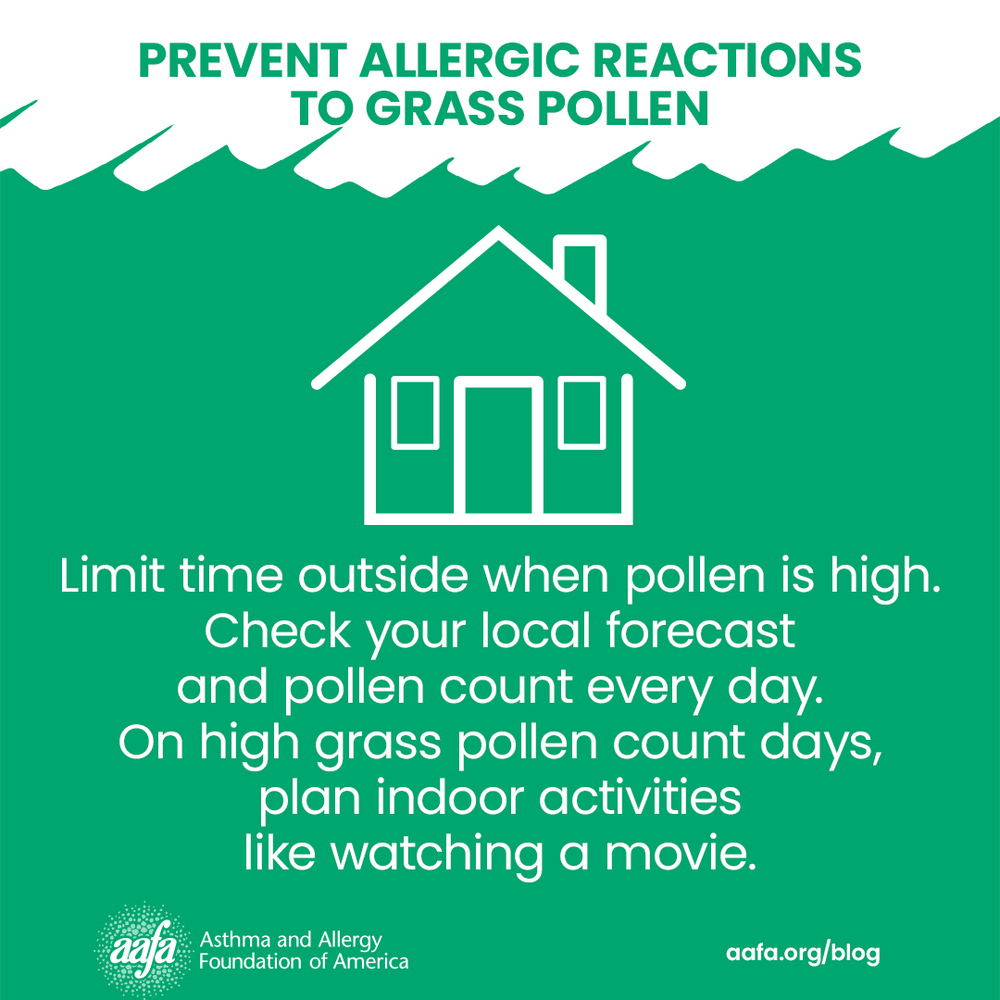
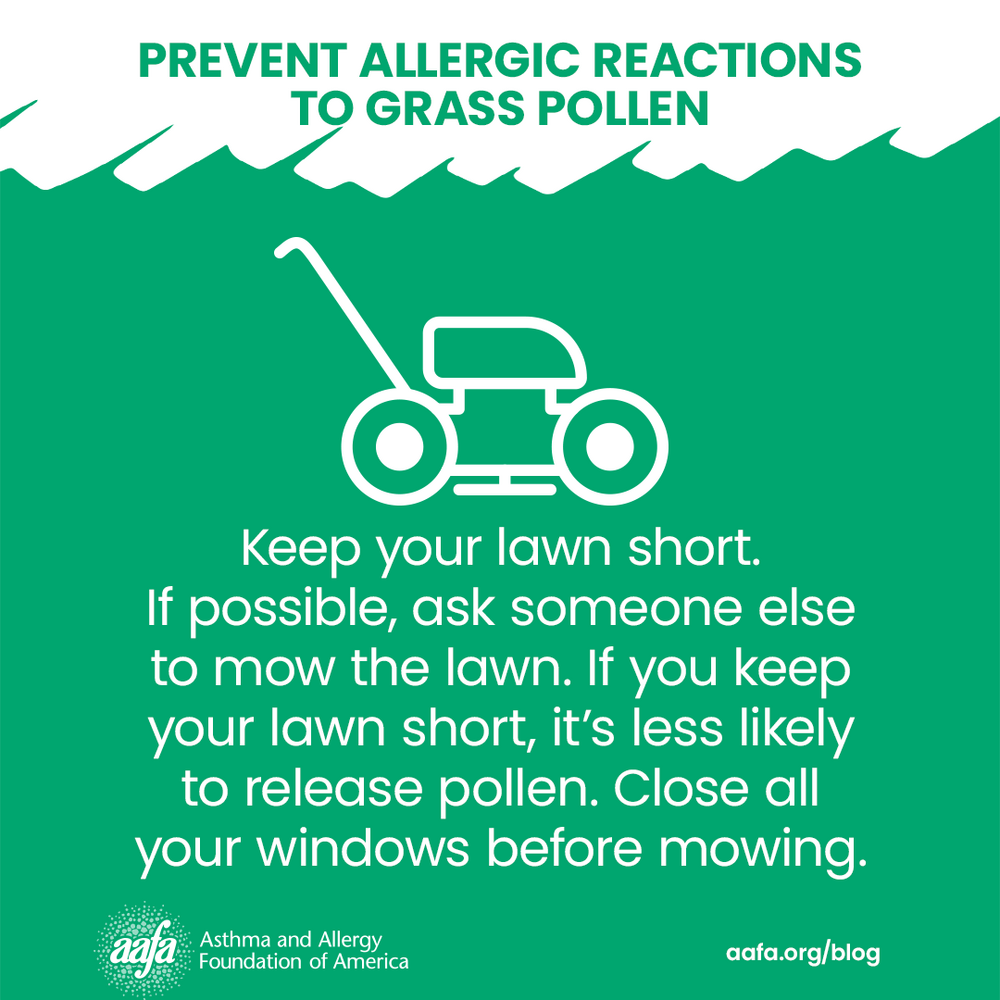
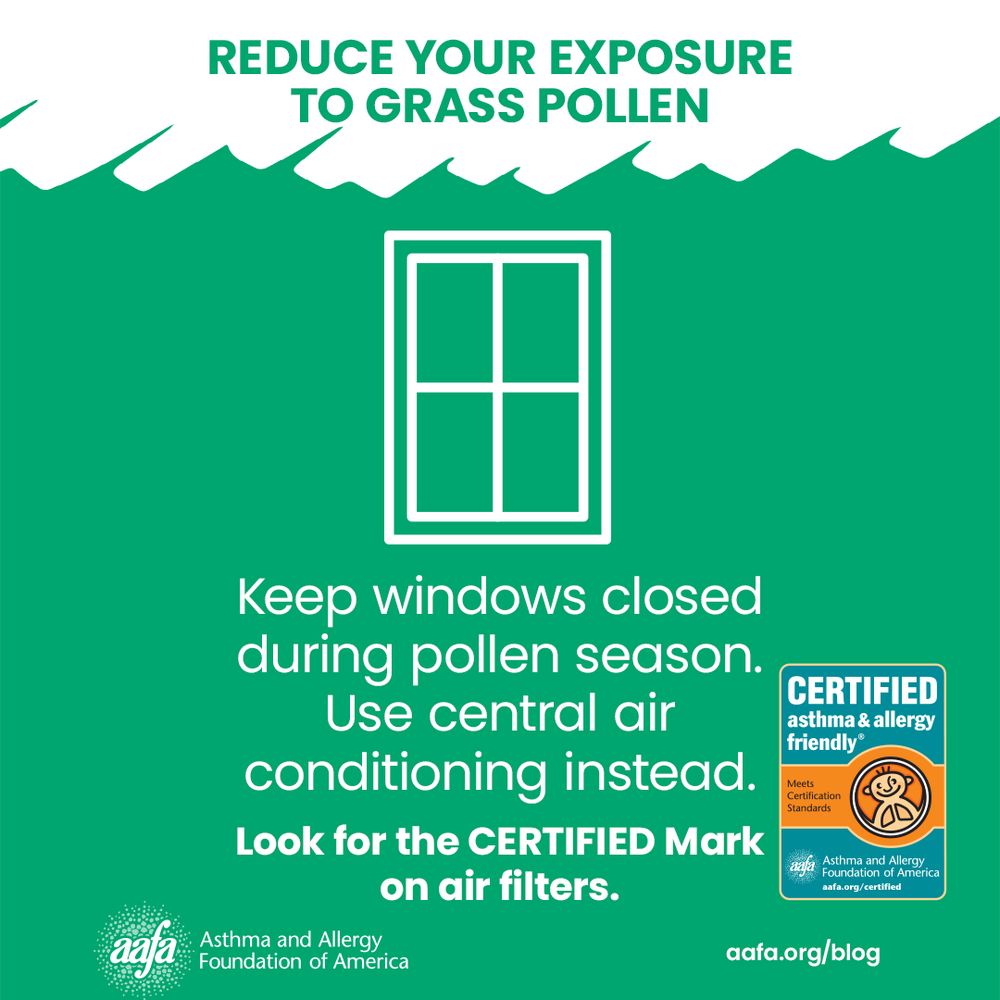



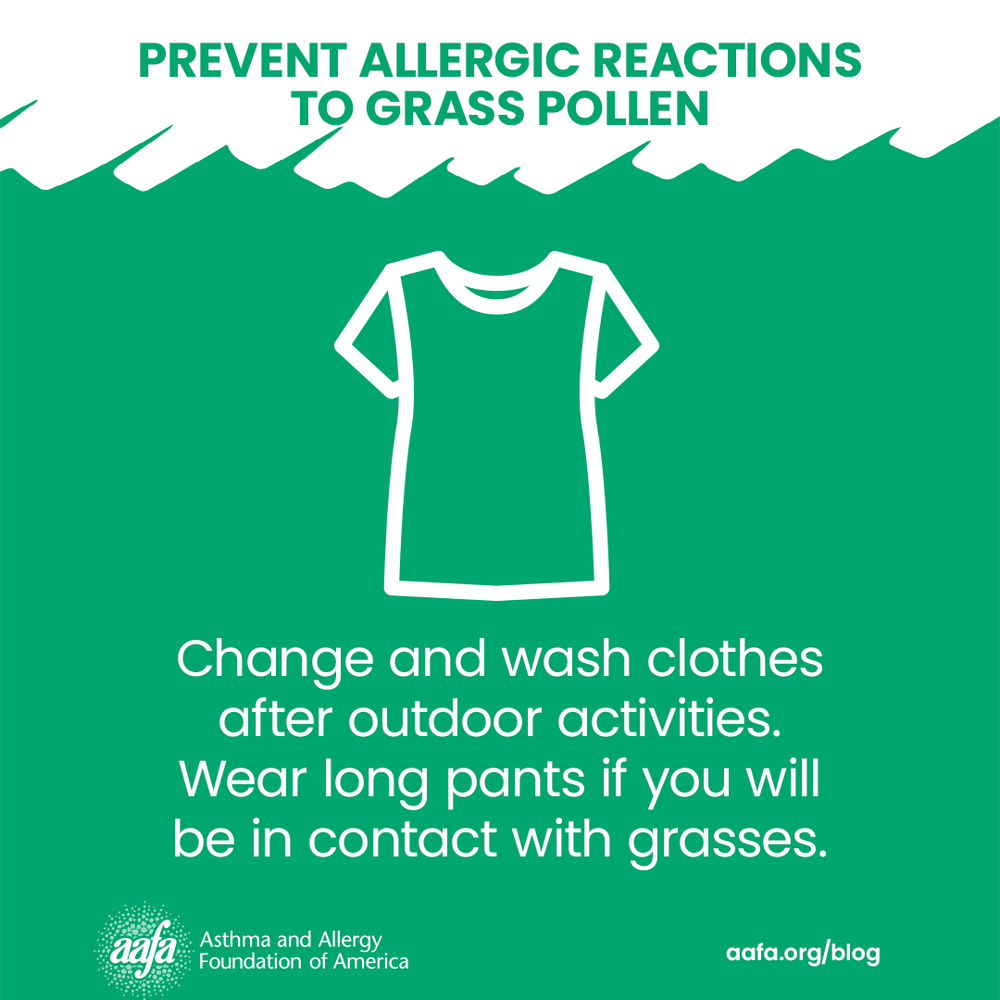

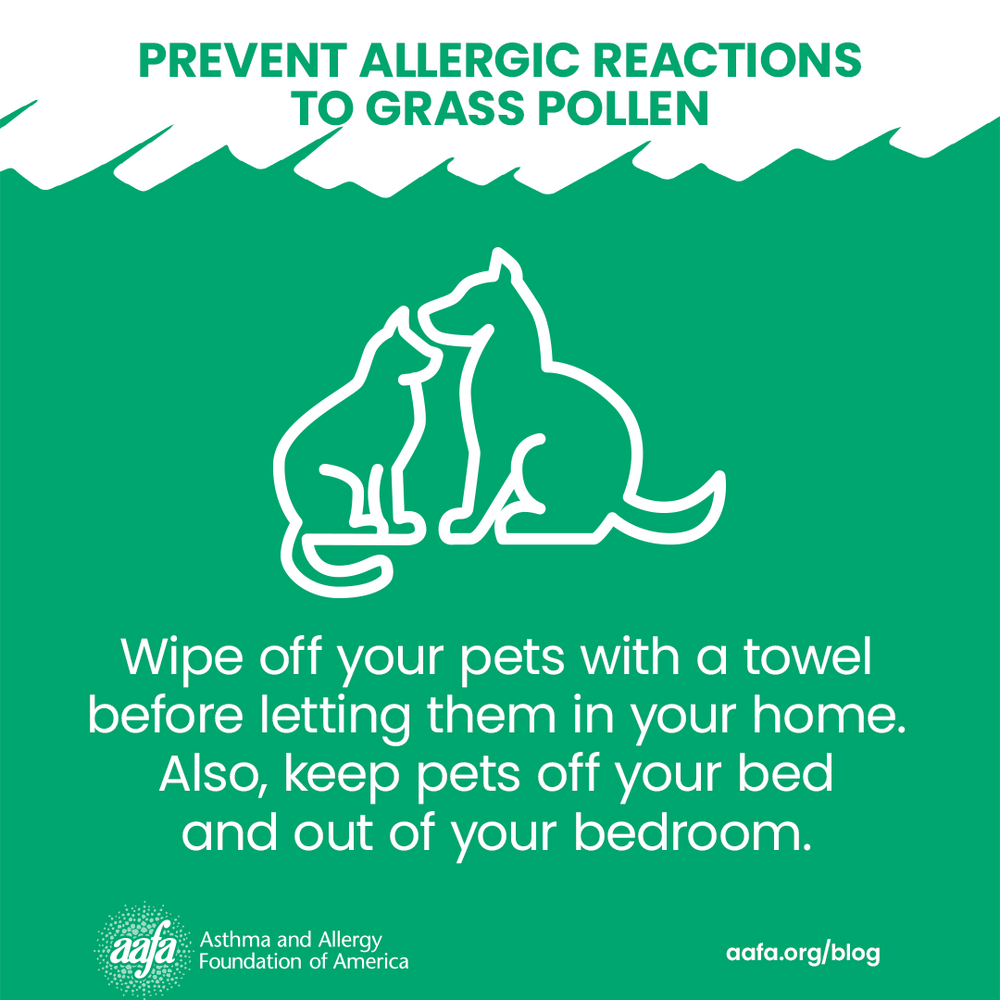
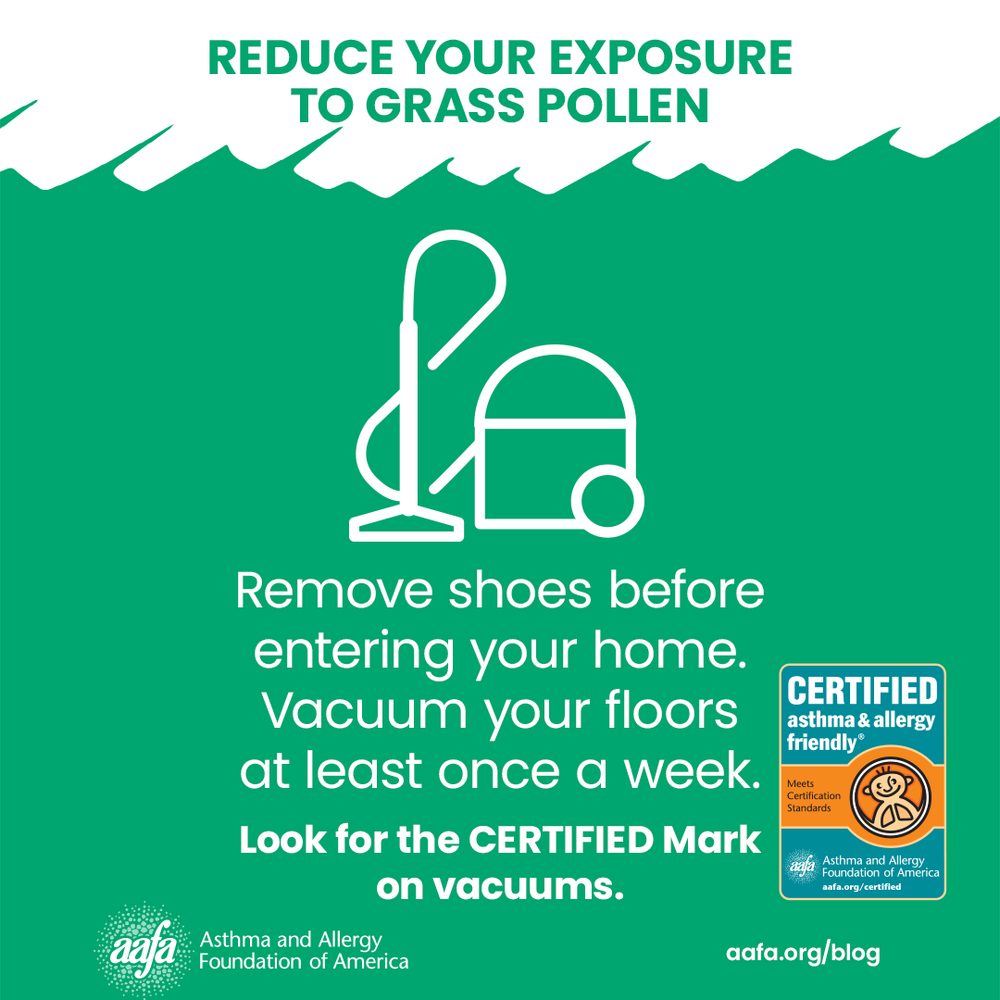
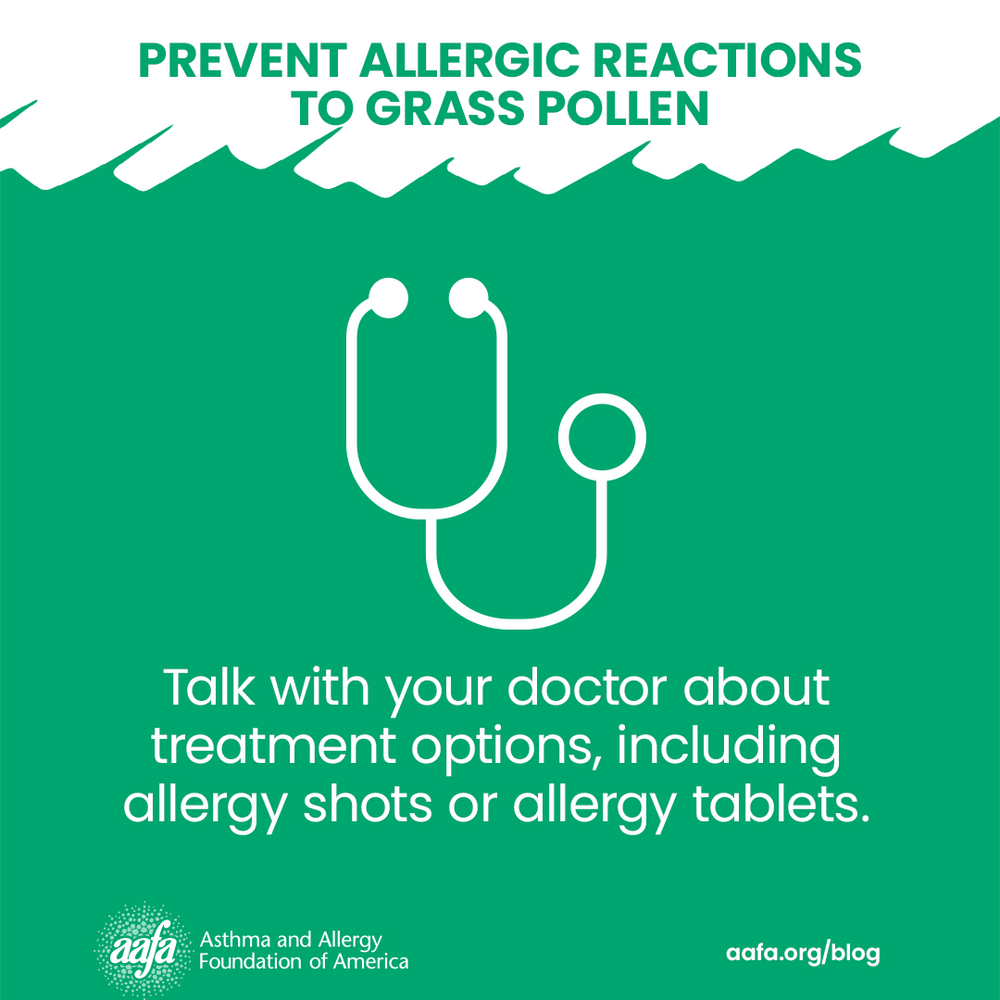
How Can I Manage My Grass Allergy Symptoms?
The first step is to get properly tested and diagnosed. Once your allergist knows what specific allergens cause your symptoms, they can work with you to create a plan.
There are over-the-counter and prescription pills, liquids, or nasal sprays that can help reduce or prevent grass allergy symptoms. These medicines include antihistamines, decongestants, and nasal corticosteroids. Most allergy medicines work best when you start taking them before pollen season begins. This allows the medicine to prevent your body from releasing histamine and other chemicals that cause your symptoms.
But if you do not get complete relief from your grass pollen allergy symptoms from these medicines, you may benefit from immunotherapy (allergy shots). Immunotherapy is a long-term treatment that can help prevent or reduce the severity of allergic reactions. It can change the course of allergic disease by modifying the body’s immune response to allergens.
There are two types of immunotherapy available for grass allergy: allergy shots and allergy tablets.
- Allergy shots – Subcutaneous immunotherapy (SCIT) is given at your doctor’s office. It involves getting injections of allergens in an increasing dosage over time. During the course of immunotherapy, a person with grass allergy becomes progressively less sensitive to that allergen. You may experience relief within one to three years of starting SCIT. The most common side effects for SCIT include local reactions at the injection site, such as redness, itching, swelling, tenderness, and pain. Less common systemic reactions may include generalized redness, hives, itching, swelling, wheezing, and low blood pressure.
- Allergy tablets – Sublingual immunotherapy (SLIT) is a form of immunotherapy that can be done at home. It is needle free and involves placing a tablet containing the allergen under your tongue for one to two minutes and then swallowing it. Treatment begins prior to the grass allergy season and continues throughout the grass allergy season. By taking these tablets every day, you may reduce your grass allergy symptoms. This treatment offers people with these allergies a potential alternative to allergy shots. SLIT tablets also have side effects and some may be serious, which is why it’s important to talk with your doctor about your treatment options.
Both forms of allergy immunotherapy (shots and tablets) are prescribed by your doctor. Talk to your doctor to get started on your allergy treatment plan.
Published June 2018, Updated June 2021











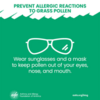
Comments (0)